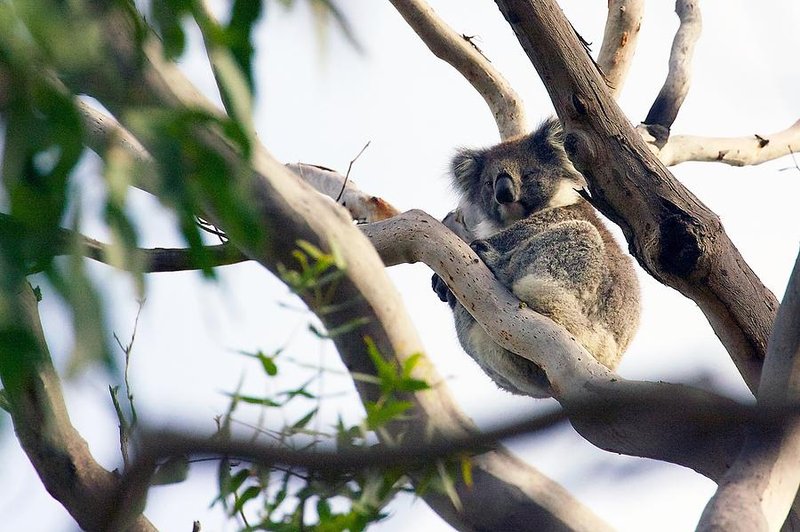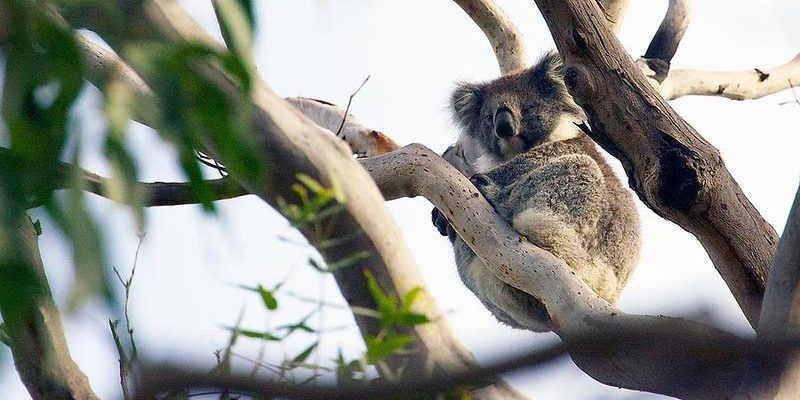
The Koa Bug, also known as the Chrysina gloriosa, is not just any ordinary beetle; it’s a true gem of Hawaii’s diverse ecosystem. If you’ve ever taken a leisurely stroll through the lush Hawaiian forests, you might have caught a glimpse of this fascinating creature. Imagine a glowing jewel among the vibrant greens and browns of the rainforest. The Koa Bug shines with iridescent colors that seem to change when they catch the light, captivating anyone lucky enough to spot one.
But it’s not just their looks that intrigue researchers and nature lovers alike. These beetles play a crucial role in their habitat, helping to pollinate various plants and maintaining the balance within the ecosystem. So, while they may seem like a pretty face, there’s much more beneath the surface. Let’s dive into the world of the Koa Bug and explore what makes it so special.
Physical Characteristics of the Koa Bug
The Koa Bug stands out due to its striking physical features. On average, these beetles measure about 1 to 1.5 inches in length and boast an impressive range of colors, often showcasing vibrant greens, blues, and even hints of gold. The shine that these colors produce is like a natural disco ball—particularly eye-catching in the dappled light of their forest habitats. The iridescence isn’t just for show; it serves as a defense mechanism against predators, confusing them and making it harder to catch these quick little bugs.
The body of the Koa Bug is not only beautiful but also designed for survival. Their hard exoskeleton provides protection against potential threats. Imagine wearing armor that reflects the sunlight, dazzling would-be predators. This unique adaptation allows them to thrive in a variety of environments, from dense forests to the edges of open fields.
Habitat and Distribution
You might be curious about where exactly you can find these elusive bugs. The Koa Bug is endemic to Hawaii, meaning it’s found nowhere else on Earth. These beetles typically inhabit the subtropical forests, where they can be seen climbing along the trunks of koa trees, which are native to the islands. The koa tree, with its dark, furrowed bark and rich canopy, provides ample food and shelter for the Koa Bug.
The humid, warm climate of Hawaii is ideal for their survival. Koa Bugs thrive in environments where temperatures are mild and moisture is abundant. Unfortunately, habitat loss due to development and invasive species threatens their populations. It’s a stark reminder of how interconnected our ecosystems are. Protecting one species means protecting the intricate web of life to which it belongs.
Diet and Feeding Habits
Just like any living creature, the Koa Bug has specific dietary needs. These beetles are primarily herbivorous, feeding on the leaves and sap of the koa trees they call home. They have strong mouthparts designed to chew through tough plant material. Imagine having a set of specialized tools perfectly suited for your favorite snacks—that’s what the Koa Bug has!
While they primarily feast on koa leaves, they are not picky eaters. During certain times of the year, they may also consume the sap from other native plants. This not only contributes to their nutrition but also aids in the pollination process. As they move from tree to tree searching for food, they inadvertently transport pollen, helping to facilitate the reproduction of various plant species.
Life Cycle of the Koa Bug
The life cycle of the Koa Bug is an intricate journey that starts with mating. Adult Koa Bugs typically mate in the spring, laying their eggs in the moist soil near the base of koa trees. After about a week, the eggs hatch into larvae, which resemble tiny, white grubs. These larvae feed on decaying plant material in the soil, continuously growing and shedding their skins. Think of it as nature’s version of a buffet, with plenty of food to go around!
As the larvae grow, they undergo several stages of development, known as instars, before finally pupating. This pupation stage can last several weeks, during which the larvae undergo a remarkable transformation. Emerging as adults, they begin their lives once again, ready to explore the forest and continue the cycle. This process can take several months from egg to adult, highlighting the patience and resilience of nature.
Threats and Conservation Efforts
Despite their captivating beauty, Koa Bugs face numerous threats in their natural habitat. Habitat destruction due to deforestation and urban development poses a significant challenge for their survival. Additionally, the introduction of non-native species, such as predatory insects and invasive plants, threatens their food supply and breeding grounds. It’s much like trying to survive in a changing neighborhood where familiar places are disappearing.
Efforts to conserve the Koa Bug and its habitat are critical. Conservation groups in Hawaii are working diligently to protect native forests and restore ecosystems where these beetles thrive. By creating protected areas and promoting sustainable practices, we can ensure that the Koa Bug continues to dazzle future generations. Every small action matters, whether it’s planting native trees or donating to conservation efforts.
Interesting Facts About the Koa Bug
| Common Name: | Koa Bug |
| Scientific Name: | Chrysina gloriosa |
| Size: | 1 to 1.5 inches |
| Habitat: | Subtropical forests in Hawaii |
| Diet: | Leaves and sap of koa trees |
| Lifespan: | Up to 1 year |
How You Can Help
Now that you know about the Koa Bug and the challenges it faces, you might be wondering how you can help. One of the simplest ways is to educate others about the importance of native species and their roles in our ecosystems. Sharing information can increase awareness and inspire action. Similarly, supporting local conservation efforts by volunteering or donating to organizations focused on preserving Hawaii’s unique environments can make a significant difference.
If you live in or visit Hawaii, consider participating in tree-planting initiatives or reporting any sightings of Koa Bugs. Citizen science is a powerful tool that allows everyone to contribute to research and conservation. Even small actions can lead to big changes when they involve whole communities working together.
FAQ
What does the Koa Bug look like?
The Koa Bug is known for its stunning iridescent body, which typically ranges in colors from bright green to gold. Measuring around 1 to 1.5 inches long, its shiny exterior helps it stand out amidst the foliage. This beetle’s unique colors can shift based on the angle of the light, creating a mesmerizing effect that’s hard to forget.
Where can I find Koa Bugs?
Koa Bugs are native to Hawaii and can primarily be found in subtropical forest habitats, especially near koa trees. These trees provide essential food and shelter, making these areas prime spots for observing these remarkable beetles. If you venture into the lush Hawaiian forests, keep an eye on the trunks of koa trees; you just might spot one!
Are Koa Bugs harmful to plants?
No, Koa Bugs are not harmful to plants. In fact, they play a beneficial role in their ecosystem. By feeding on the leaves of koa trees, they may help with natural pruning, allowing for healthier growth. Additionally, as they move around, they assist in pollination, contributing to the overall health of the forest.
How long do Koa Bugs live?
The lifespan of Koa Bugs can be up to one year. Their life cycle begins with mating in the spring, followed by the hatching of eggs and development into larvae. Throughout their life, they contribute significantly to their ecosystem, making their relatively short lives impactful.
What threats do Koa Bugs face?
Koa Bugs face several threats, mainly due to habitat loss from urban development and deforestation. The introduction of non-native species, such as predatory insects, also poses a risk to their survival. Conservation efforts are critical to ensure that these beautiful beetles continue to thrive in their natural habitats.
How can I support Koa Bug conservation?
You can support Koa Bug conservation by educating yourself and others about the importance of native species. Participating in local conservation initiatives, such as tree planting or habitat restoration projects, can also help. Donating to or volunteering with organizations focused on preserving Hawaii’s unique ecosystems is another effective way to contribute.
Can Koa Bugs be kept as pets?
While it might be tempting to keep a Koa Bug as a pet due to its stunning appearance, it’s not recommended. These beetles have specific environmental needs that are best met in their natural habitat. Moreover, removing them from their ecosystem can disrupt the delicate balance of their environment. It’s best to admire them in the wild!
Do Koa Bugs have any predators?
Yes, Koa Bugs do have predators. Birds and other insects may prey on them, particularly when they are resting on tree trunks. However, their iridescent colors and hard exoskeleton serve as a defense mechanism, helping them avoid being eaten. Nature has equipped them well to navigate their challenges.
What is the diet of a Koa Bug?
Koa Bugs primarily feed on the leaves and sap of koa trees, their primary habitat. They have strong mouthparts designed for chewing through the tough plant material, allowing them to access the nutrients they need to thrive. Their feeding habits also play a role in pollination, benefiting the forest ecosystem.
Are Koa Bugs social insects?
Koa Bugs are not social insects; they are mainly solitary creatures. While they may be found in proximity to one another during mating seasons or feeding, they do not exhibit the complex social structures seen in bees or ants. Each bug tends to go about its individual life in the rich tapestry of the forest.
How do scientists study Koa Bugs?
Scientists study Koa Bugs through various methods, including field observations, habitat assessments, and population monitoring. By tracking their behavior and interactions within the ecosystem, researchers can gain insights into their role and threats. Citizen science initiatives also allow the public to help collect data, making it a collaborative effort.

